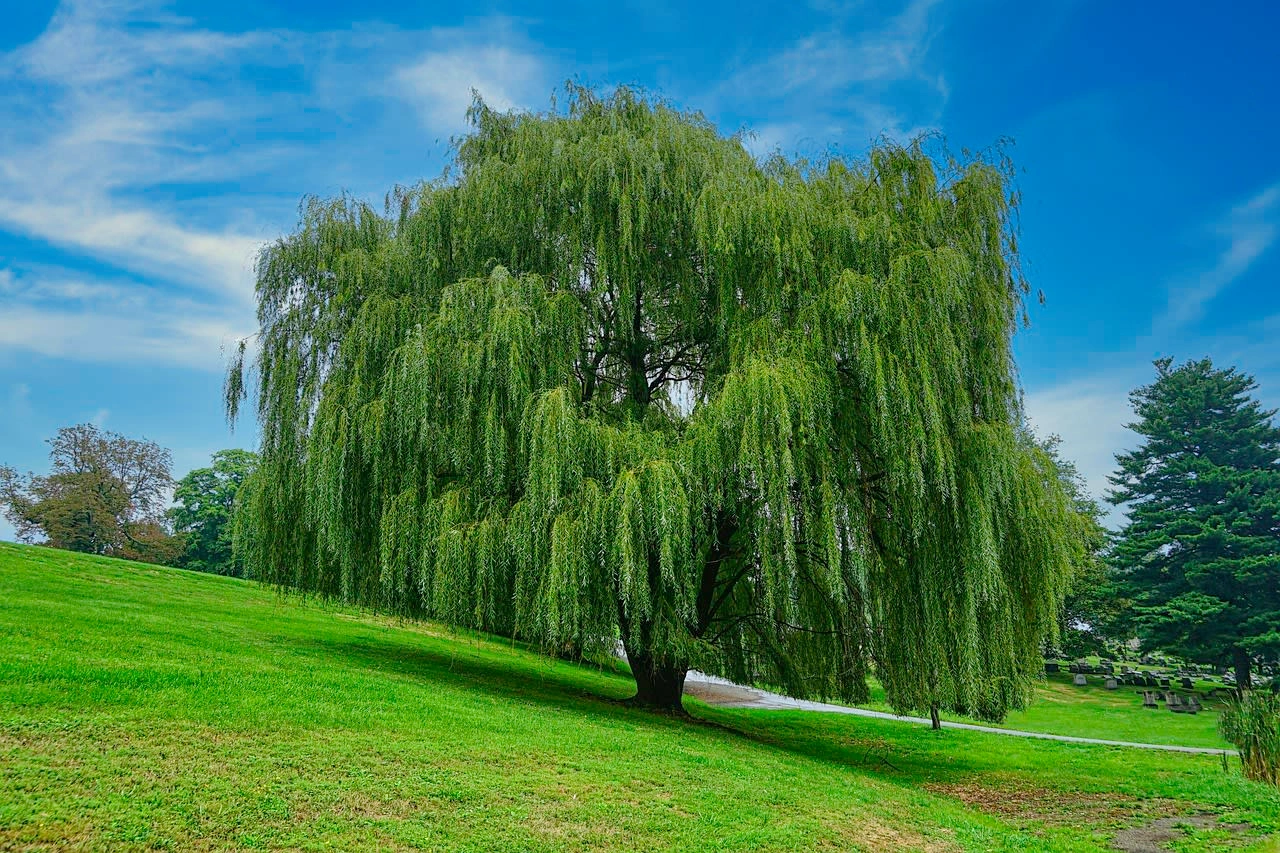Everything you Need to Know About Weeping Willow Trees
1122 words / 6192 characters

Photo by dalebet on Pixabay
Weeping willow trees (Salix Babylonia), also known as Babylon willows, are renowned for their graceful appearance and historical significance. These fast-growing trees can add elegance and beauty to any landscape with their cascading branches and delicate foliage. In this comprehensive guide, we will explore the various aspects of weeping willow trees, including their care, characteristics, propagation, common pests and diseases, and more.
Weeping willows belong to the Salicaceae family. These majestic trees can reach a mature height of 30-40 feet and have a similar spread. They thrive in full sun but can tolerate some light shade. Weeping willows can adapt to various soil types, including moist clay, loamy, or sandy soil.
Section 1: Types of Weeping Willows
While all weeping willows share a gracefully cascading form, there are several cultivars with unique bark, growth patterns, and leaves. These hybrids may be sold under different species names or simply as "Salix." Let's explore some popular cultivars:
'Babylon': This is the traditional weeping willow variety, characterized by its broad umbrella shape and long tendrils that drape down. The light green leaves turn yellow in the fall.
'Crispa': The leaves of this cultivar curl into distinctive ram's horn shapes. It initially grows upright before the branches start to bend downward.
'Golden Curls' and 'Scarlet Curls': These hybrids feature gnarled and twisted branches that add visual interest during winter. When covered with leaves, which also have a slight curl, these trees appear rounded and gently weeping, with branches that stop just above the ground.
Section 2: Weeping Willow Care
Light Requirements
To ensure optimal growth, weeping willows should be planted in full sun, receiving at least six hours of direct sunlight daily.
Soil Preferences
Weeping willows are versatile when it comes to soil conditions. They can thrive in clay, loamy, or sandy soil, as long as it remains consistently moist. While they prefer slightly acidic soil, they can also tolerate neutral and slightly alkaline soils.
Watering Needs
Proximity to a water source is crucial for the health and vitality of weeping willow trees. Plant them near a body of freshwater to ensure they receive ample moisture. While occasional flooding does not harm these trees, frequent standing water can negatively impact their health. It is important to note that weeping willows have aggressive water-seeking roots, so avoid planting them near structures like homes, sidewalks, water lines, or septic tanks. If you choose to plant them in drier areas, regular watering is necessary, especially during drought conditions.
Temperature and Humidity
Weeping willows thrive in humid climates and are one of the first trees to leaf out in spring. While they are not particularly winter hardy, they can be grown in the Upper South. In the Coastal South, some gardeners have reported success. Planting these trees in the fall allows their roots to establish before the summer heat.
Fertilizing
Fertilizing can promote the growth and overall health of young weeping willow trees. It is recommended to feed them once a year in the spring, just before new growth appears. Slow-release fertilizers are preferable to reduce the risk of runoff contaminating nearby bodies of water. Choose a fertilizer specifically formulated for trees and follow the package instructions for application.
Section 3: Pruning and Maintenance
Weeping willows are known for their weak wood and messy nature. Proper pruning and maintenance are crucial to ensure the longevity and structural integrity of these trees. Here are some essential practices to consider:
Training Young Trees
It is important to train weeping willow trees when they are young to develop a strong structure. You can tie the central leader of the tree to a stake to encourage an upright trunk. Some saplings may come pre-pruned, but if not, removing lower branches can promote more height and create space under the canopy.
Thinning Overgrown Trees
If your weeping willow becomes overly dense and tangled, thinning the branches is necessary. Winter or early spring, when the tree is dormant and its structure is visible, is the best time for thinning. Start by removing crossing branches, prioritizing smaller branches and those with narrow V-shaped crotches. Try to preserve stronger, horizontal branches as much as possible. If larger branches become too heavy and weaken the tree, they should be removed. Ensure that the crown remains balanced on each side and remove additional growth on one side if needed. It is essential to remove any broken, dead, or diseased branches, as well as any suckers that sprout from the ground.
Like this project
Posted Aug 26, 2023
Artical Sample
Likes
0
Views
1



